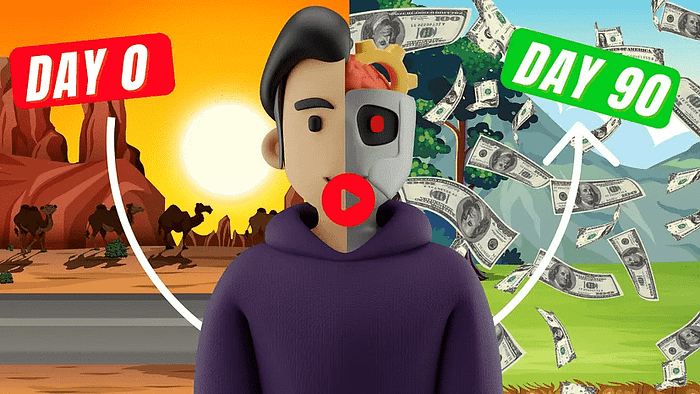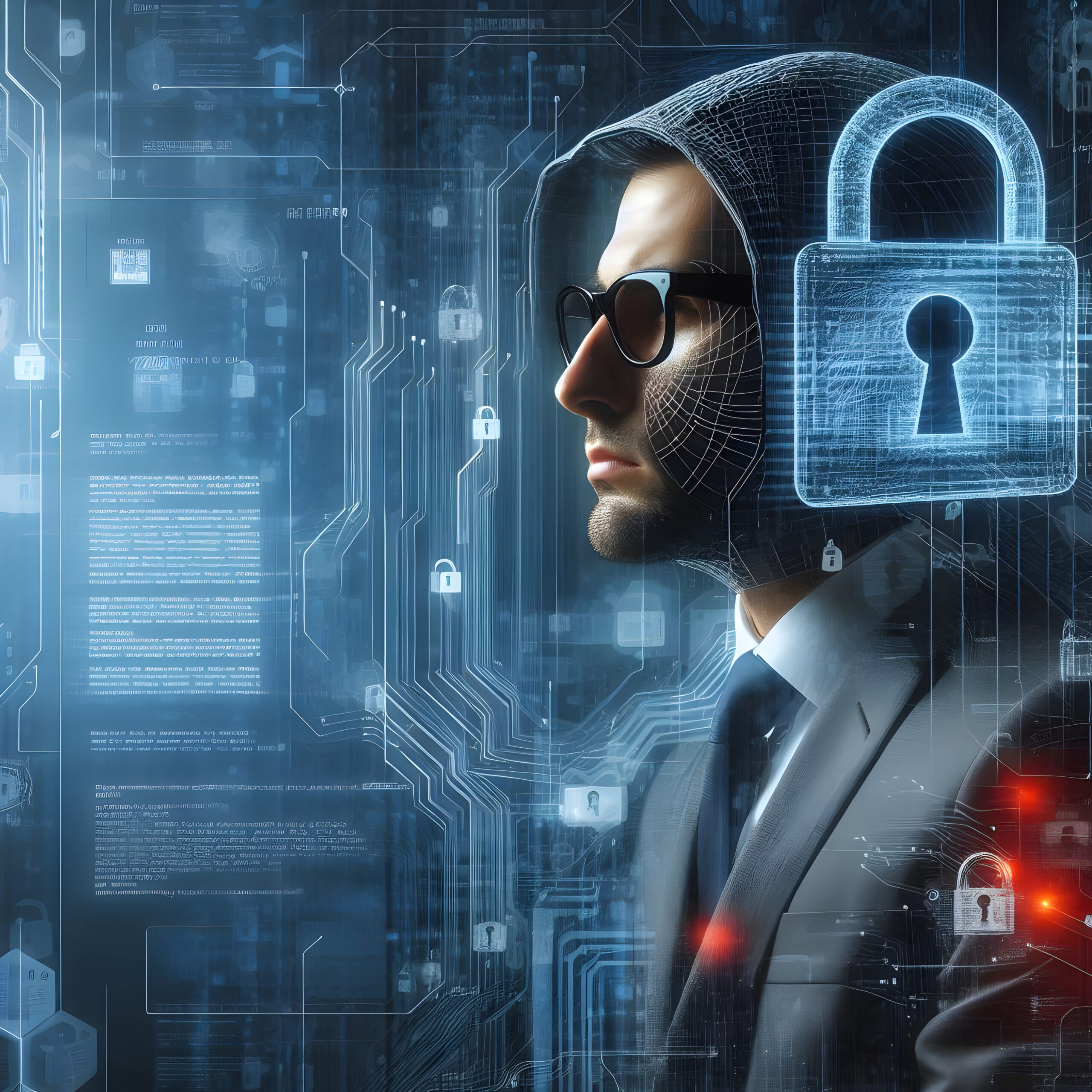Best AI Upscaling Security Footage Tools: Enhancing Surveillance Video Quality
Ever wondered how detectives in TV shows magically enhance blurry security camera footage?
Well, it’s not just Hollywood magic anymore!
AI upscaling security footage tools are revolutionizing the way we improve surveillance video quality.
These cutting-edge technologies are transforming grainy, low-resolution images into crystal-clear evidence.
In this comprehensive guide, we’ll explore the best AI upscaling security footage solutions available today.
We’ll dive deep into how these tools work, their benefits, and which ones stand out in the crowd.
Whether you’re a security professional, law enforcement officer, or just curious about the latest in AI technology, this article is for you.
So, let’s embark on this high-definition journey and discover how AI is reshaping the landscape of video surveillance!
We strongly recommend that you check out our guide on how to take advantage of AI in today’s passive income economy.
Table of Contents
Understanding AI Upscaling: The Magic Behind Enhanced Footage
Before we delve into the specific tools for AI upscaling security footage, it’s crucial to understand what this technology is all about.
AI upscaling, also known as super-resolution, is a process that uses artificial intelligence to enhance the resolution and quality of images or videos.
When applied to security footage, this technology can dramatically improve the clarity and detail of surveillance videos.
The AI algorithms analyze the existing pixels in a low-resolution image and intelligently predict what additional pixels should be added to increase the resolution.
This process goes beyond simple interpolation, as the AI can recognize patterns and details that might not be immediately visible in the original footage.
By leveraging machine learning models trained on vast datasets of images, AI upscaling tools can produce remarkably accurate and detailed results.
How AI Upscaling Differs from Traditional Methods
Traditional methods of enhancing video quality often rely on simple mathematical algorithms to interpolate pixels.
While these can somewhat improve image clarity, they often result in blurry or pixelated results when dealing with significant upscaling.
AI upscaling security footage, on the other hand, uses sophisticated neural networks to analyze and enhance each frame.
These networks can identify edges, textures, and even specific objects within the image, allowing for much more precise and natural-looking enhancements.
The result is a higher quality image that preserves important details and can potentially reveal crucial information that was previously indiscernible.
This technology has game-changing implications for security and law enforcement, as it can turn seemingly useless low-resolution footage into valuable evidence.
Top AI Upscaling Security Footage Tools in the Market
Now that we understand the basics of AI upscaling, let’s explore some of the best tools available for enhancing surveillance video quality.
These solutions leverage state-of-the-art AI algorithms to deliver impressive results in improving security camera footage.
Each tool has its unique strengths and features, catering to different needs and use cases in the realm of video surveillance enhancement.
From user-friendly interfaces to advanced customization options, these AI upscaling security footage tools offer a range of capabilities to suit various requirements.
Let’s dive into the details of each tool and discover how they can transform your surveillance footage from mediocre to magnificent.
Remember, the effectiveness of these tools can vary depending on the quality of the original footage and the specific enhancement needs.
Tool 1: DeepAI Security Enhancer
DeepAI Security Enhancer stands out as a powerful solution for AI upscaling security footage.
This tool utilizes advanced deep learning algorithms to dramatically improve the quality of low-resolution surveillance videos.
With its intuitive interface, even those new to AI technology can easily navigate and enhance their footage.
DeepAI Security Enhancer excels in preserving fine details while reducing noise and artifacts in the upscaled image.
It offers various upscaling options, allowing users to choose the level of enhancement that best suits their needs.
The tool also provides batch processing capabilities, making it efficient for handling large volumes of footage.
One of the key strengths of DeepAI Security Enhancer is its ability to handle different types of security camera footage, from grainy night vision to compressed daytime videos.
Tool 2: Topaz Video Enhance AI
Topaz Video Enhance AI is another top contender in the field of AI upscaling security footage.
Known for its impressive results in enhancing video quality, this tool has gained popularity among security professionals and video enthusiasts alike.
Topaz Video Enhance AI uses a combination of deep learning models to not only increase resolution but also to reduce noise and improve overall video clarity.
The software offers a range of AI models optimized for different types of footage, including security camera videos.
Users can preview the results of different models and settings before applying them to the entire video.
This flexibility allows for fine-tuning the enhancement process to achieve the best possible results for each specific piece of footage.
Topaz Video Enhance AI also stands out for its ability to handle motion blur and camera shake, common issues in security footage.
Tool 3: NVIDIA AI Upscaler
NVIDIA, a leader in graphics processing technology, offers a powerful AI upscaling tool that’s particularly effective for security footage enhancement.
The NVIDIA AI Upscaler leverages the company’s expertise in GPU acceleration to deliver fast and high-quality results.
This tool is especially adept at handling real-time upscaling, making it suitable for live security camera feeds.
The NVIDIA AI Upscaler uses a proprietary deep learning model trained on a vast dataset of images.
This training allows it to intelligently fill in details and improve clarity without introducing artifacts or unnatural-looking elements.
One of the key advantages of this tool is its integration with NVIDIA graphics cards, which can significantly speed up the upscaling process.
For security operations that need to process large amounts of footage quickly, the NVIDIA AI Upscaler can be an excellent choice.
Tool 4: Waifu2x
While originally designed for anime-style images, Waifu2x has proven to be surprisingly effective for AI upscaling security footage.
This open-source tool uses convolutional neural networks to enhance image resolution and reduce noise.
Waifu2x’s strength lies in its ability to preserve sharp edges and fine details, which can be crucial in security footage analysis.
The tool offers both online and offline versions, making it accessible for users with different needs and technical capabilities.
Despite its simplicity, Waifu2x can produce impressive results, especially when dealing with footage that has distinct edges and patterns.
It’s worth noting that while Waifu2x may not have all the features of more specialized security footage enhancers, its ease of use and effectiveness make it a valuable option for quick enhancements.
Tool 5: A.I. Image Enlarger
A.I. Image Enlarger is a versatile tool that, despite its name, is highly effective for AI upscaling security footage.
This online platform uses advanced AI algorithms to enhance both images and video frames without loss of quality.
One of the standout features of A.I. Image Enlarger is its ability to upscale images up to 8 times their original size while maintaining clarity.
The tool offers different AI models optimized for various types of images, including those from security cameras.
Users can choose between models that prioritize sharpness, noise reduction, or a balance of both, depending on the characteristics of their footage.
A.I. Image Enlarger also provides options for adjusting contrast and sharpness, allowing for further customization of the enhanced footage.
Its user-friendly interface makes it accessible to users with varying levels of technical expertise, from security professionals to small business owners.
Factors to Consider When Choosing AI Upscaling Security Footage Tools
With the variety of AI upscaling security footage tools available, it’s important to consider several factors when making your choice.
Each tool has its strengths and limitations, and the best option for you will depend on your specific needs and circumstances.
Here are some key factors to keep in mind as you evaluate different AI upscaling solutions for your security footage enhancement needs.
Remember, the goal is to find a tool that not only improves video quality but also fits seamlessly into your existing security infrastructure and workflows.
Let’s explore these factors in detail to help you make an informed decision about which AI upscaling tool is right for you.
Processing Speed and Hardware Requirements
When dealing with large volumes of security footage, processing speed becomes a crucial factor in choosing an AI upscaling tool.
Some tools, like the NVIDIA AI Upscaler, are designed to take advantage of specific hardware for faster processing.
Consider the hardware you have available and whether it meets the requirements of the AI upscaling tool you’re considering.
If you need to process footage in real-time or have a large backlog of videos to enhance, opt for tools that offer GPU acceleration.
On the other hand, if you’re dealing with smaller amounts of footage or don’t need immediate results, a tool with slower processing but higher quality output might be suitable.
It’s also worth considering whether the tool offers batch processing capabilities, which can significantly streamline your workflow when dealing with multiple video files.
Ease of Use and User Interface
The usability of an AI upscaling security footage tool can greatly impact its effectiveness in your security operations.
A tool with an intuitive interface and clear instructions can save time and reduce the learning curve for your team.
Consider whether the tool offers features like preview options, which allow you to see the results before applying them to the entire video.
Some tools, like DeepAI Security Enhancer, are designed with user-friendliness in mind, making them accessible even to those new to AI technology.
However, if you have a team of experienced professionals, you might prefer a tool with more advanced customization options.
The availability of customer support and documentation is another important factor to consider, especially if you’re implementing the tool across a large organization.
Customization and Control Options
Different security footage may require different enhancement approaches, so the level of customization a tool offers is important.
Look for AI upscaling security footage tools that allow you to adjust parameters such as sharpness, noise reduction, and contrast.
Tools like Topaz Video Enhance AI offer multiple AI models optimized for different types of footage, providing greater flexibility.
Consider whether the tool allows you to save custom presets, which can be useful for consistently enhancing footage from specific cameras or locations.
The ability to fine-tune the AI’s behavior can be crucial in achieving the best possible results for your specific security footage.
However, keep in mind that more customization options can also increase complexity, so balance this with your team’s technical expertise.
Output Quality and Consistency
Perhaps the most critical factor in choosing an AI upscaling tool is the quality of its output.
Evaluate how well each tool preserves important details while reducing noise and artifacts in the enhanced footage.
Consider testing the tools with a variety of your own security footage to see how they perform in different scenarios.
Look for consistency in the results – a tool should provide reliable enhancements across different types of footage and lighting conditions.
Some tools, like A.I. Image Enlarger, offer different AI models optimized for various image types, which can help in achieving consistent results.
Remember that the highest quality output may come at the cost of longer processing times, so consider your priorities in terms of quality versus speed.
Integration with Existing Systems
For many organizations, the ability to integrate an AI upscaling tool with existing security systems is crucial.
Consider whether the tool offers API access or can be integrated into your current video management software.
Some tools may offer plugins or extensions for popular security software, making integration easier.
If you’re dealing with live feeds, look for tools that can handle real-time processing and streaming of enhanced footage.
Consider also the format compatibility of the tool – it should be able to handle the video formats used by your security cameras.
The ease of integration can significantly impact the overall efficiency of your security operations, so it’s worth prioritizing tools that offer flexible integration options.
The Future of AI Upscaling in Security and Surveillance
As we look ahead, the future of AI upscaling security footage appears incredibly promising and transformative.
The rapid advancements in artificial intelligence and machine learning are continually pushing the boundaries of what’s possible in video enhancement.
We can expect to see even more sophisticated AI models that can handle a wider range of video qualities and conditions.
The integration of AI upscaling with other security technologies, such as facial recognition and object detection, is likely to create powerful, comprehensive surveillance solutions.
As these technologies evolve, we may see real-time AI upscaling become standard in security camera systems, providing instant high-quality footage.
However, with these advancements come important considerations about privacy and ethical use of enhanced surveillance footage.
Emerging Trends in AI Upscaling Technology
One exciting trend in AI upscaling security footage is the development of models that can enhance specific elements within a video.
For instance, future tools might be able to selectively enhance faces or license plates while leaving the background at a lower resolution.
We’re also seeing advancements in AI that can intelligently fill in missing information, potentially reconstructing details that were not captured in the original footage.
The use of federated learning techniques may allow AI models to improve their upscaling capabilities without compromising the privacy of security footage.
As quantum computing develops, we may see quantum-enhanced AI algorithms that can process and enhance footage at unprecedented speeds and qualities.
The integration of AI upscaling with edge computing could bring high-quality enhancement capabilities directly to security cameras, reducing the need for centralized processing.
Challenges and Ethical Considerations
As AI upscaling security footage technology becomes more powerful, it raises important ethical and legal questions that need to be addressed.
The ability to dramatically enhance footage could potentially infringe on privacy rights, especially if used to identify individuals in public spaces.
There are also concerns about the authenticity of AI-enhanced footage and its admissibility as evidence in legal proceedings.
The potential for misuse of this technology, such as creating deepfakes or manipulating evidence, needs to be carefully considered and safeguarded against.
As AI upscaling becomes more widespread, there may be a need for new regulations and standards governing its use in security and surveillance contexts.
Balancing the benefits of enhanced security footage with the protection of individual privacy rights will be an ongoing challenge for policymakers and technology developers alike.
In conclusion, AI upscaling security footage tools are revolutionizing the field of video surveillance, offering unprecedented capabilities in enhancing low-quality footage.
From DeepAI Security Enhancer to NVIDIA AI Upscaler, these tools provide a range of options for improving the clarity and usefulness of security camera recordings.
As we’ve explored, factors such as processing speed, ease of use, customization options, output quality, and system integration are crucial in choosing the right tool for your needs.
Looking to the future, we can expect even more advanced AI upscaling technologies that will further transform security and surveillance practices.
However, as these technologies evolve, it’s crucial to remain mindful of the ethical implications and to use these powerful tools responsibly.
By leveraging AI upscaling security footage tools effectively and ethically, we can enhance public safety while respecting individual privacy rights.
The journey of AI in video enhancement is just beginning, and it promises to bring exciting developments in the years to come.
Frequently Asked Questions (FAQ)
Is it possible to enhance security camera footage?
Yes, it is possible to enhance security camera footage using various techniques and technologies.
Modern AI-powered tools have made significant strides in improving the quality of surveillance video.
These tools can increase resolution, reduce noise, improve contrast, and even clarify details that were previously indistinguishable.
AI upscaling security footage is particularly effective, using machine learning algorithms to intelligently enhance video quality.
However, it’s important to note that the extent of enhancement depends on the original footage quality and the specific tool used.
While enhancement can significantly improve visibility, it cannot create details that weren’t captured in the original recording.
For best results, combine AI upscaling with other enhancement techniques like denoising and contrast adjustment.
How to enhance low quality CCTV footage?
Enhancing low quality CCTV footage involves several steps and techniques:
- Use AI upscaling security footage tools: These advanced algorithms can significantly improve resolution and clarity.
- Apply noise reduction: This helps to remove graininess and improve overall image quality.
- Adjust contrast and brightness: This can help make details more visible, especially in over or underexposed areas.
- Utilize frame averaging: For static scenes, combining multiple frames can reduce noise and enhance details.
- Apply sharpening filters: These can help define edges and improve overall clarity, but should be used carefully to avoid artifacts.
- Consider specialized software: Tools like DeepAI Security Enhancer or Topaz Video Enhance AI are designed for this purpose.
- If possible, work with the original, uncompressed footage for best results.
- For critical cases, consider consulting with a professional video forensics expert.
How is AI used in video surveillance?
AI is revolutionizing video surveillance in several ways:
- Video Enhancement: AI upscaling security footage improves the quality and usability of surveillance videos.
- Real-time Monitoring: AI can analyze live feeds to detect anomalies or specific events, alerting security personnel instantly.
- Facial Recognition: AI algorithms can identify and track individuals across multiple cameras.
- Object Detection: AI can recognize and track specific objects, vehicles, or behaviors of interest.
- Predictive Analysis: By analyzing patterns, AI can predict potential security threats or incidents.
- Smart Searching: AI enables efficient searching of large volumes of footage based on specific criteria.
- Privacy Protection: AI can automatically blur faces or sensitive information in footage to comply with privacy regulations.
- Night Vision Enhancement: AI can improve the quality of low-light or infrared footage.
How to clear up surveillance footage?
Clearing up surveillance footage involves several techniques:
- Use AI upscaling security footage tools: These can significantly improve clarity and resolution.
- Apply denoising algorithms: This reduces graininess and improves overall image quality.
- Adjust contrast and brightness: This can help reveal details in dark or overexposed areas.
- Use sharpening filters: These can help define edges and improve clarity, but use sparingly to avoid artifacts.
- Apply color correction: This can help improve the overall look of the footage and make details more visible.
- Utilize frame interpolation: For low frame rate videos, this can create smoother motion.
- Consider specialized software: Tools like NVIDIA AI Upscaler or A.I. Image Enlarger are designed for this purpose.
- If dealing with motion blur, use deblurring algorithms specifically designed for video footage.
- For best results, always work with the highest quality source footage available.
- In critical cases, consider consulting with a video forensics expert for professional-grade enhancements.
Remember, while these techniques can significantly improve footage quality, they cannot create details that weren’t captured in the original recording.

We strongly recommend that you check out our guide on how to take advantage of AI in today’s passive income economy.




